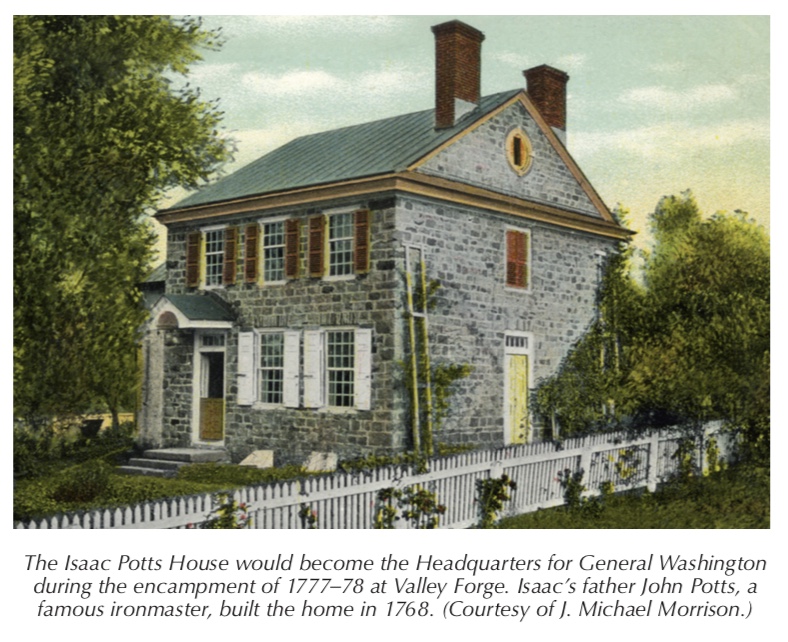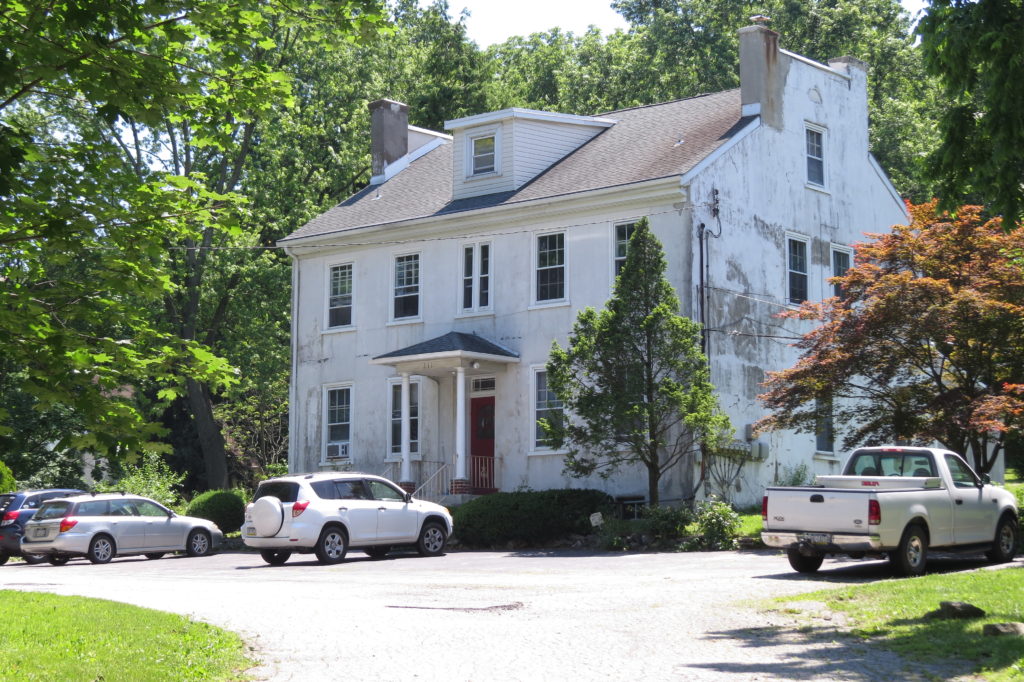At the end of the nineteenth century, with the Valley Forge Centennial Association, Anna M. Holstein became involved in the purchase of Washington’s Headquarters. The Association sought state funding for another reason: “The money is wanted less for current expenses than to purchase Washington’s old headquarters.”
The members of the Association had already decided that the Valley Forge experience deserved not just an elaborate celebration to mark the 100th anniversary of the encampment on June 19, 1878, but a lasting memorial. It was suggested that no more fitting memorial could be designated than Washington’s Headquarters, which had already stood the storms of more than one hundred years.
Washington’s Headquarters was not as architecturally impressive as many other sites associated with Washington. It was a small two-story, three-bay, gable-roofed stone Georgian structure with a floor plan similar to that of a townhouse, asymmetrical with only two small rooms per floor and a stair hall running the length of the building. Its small kitchen wing might have postdated the Revolution. Originally, it might have been built as a summer residence for the relatively wealthy eighteenth-century Potts family, who had owned considerable property and commanded the industrial operations in the valley. In the nineteenth century, Washington’s Headquarters was believed to have been built around 1760, but current thinking suggests it may have been built as late as 1773. In 1877 it belonged to Hannah Ogden.
On Washington’s Birthday 1878, the Valley Forge Centennial Association reorganized to meet their objective of purchasing Washington’s Headquarters. They changed their name to the Valley Forge Centennial and Memorial Association, resolving to appoint a lady regent to head a committee of patriotic women who would raise the funds to purchase their memorial.
For their first female regent, the Centennial and Memorial Association of Valley Forge selected Anna Morris Holstein who had served as an army nurse during the Civil War. Most important was her reputation as a fundraiser. Anna Morris Holstein had been part of the Mount Vernon Ladies’ Association and had already successfully raised money in Montgomery County. It was hoped that she would be able to raise funds both nationally and locally for Valley Forge’s worthy cause.
Because the modest house was so full of “precious memories,” Hannah Ogden wanted $6,000.00 for it. Mrs. Holstein and her committeewomen soon came to terms with Mrs. Ogden. It was proposed that the Centennial and Memorial Association pay Mrs. Ogden $500 on May 1, $1,000.00 on August 1, $1,500.00 on October 1, and secure a mortgage for the other $3,000.
At the end of May and the beginning of June 1878, the Centennial and Memorial Association issued invitations to their upcoming celebration on June 19, 1878 of the one hundredth anniversary of the occupation of Valley Forge by the Continental Army.
Newspapers reported that 20,000 to 30,000 people attended the celebration. The crowds arrived by every train in the morning until the little village of Valley Forge was soon overflowing. Visitors were charged ten cents admission to enter the “national shrine.”
In 1893, the area around Washington’s Headquarters was chosen as the site of the first state park of Pennsylvania “to preserve, improve, and maintain as a public park the site on which General George Washington’s army encamped at Valley Forge.”


